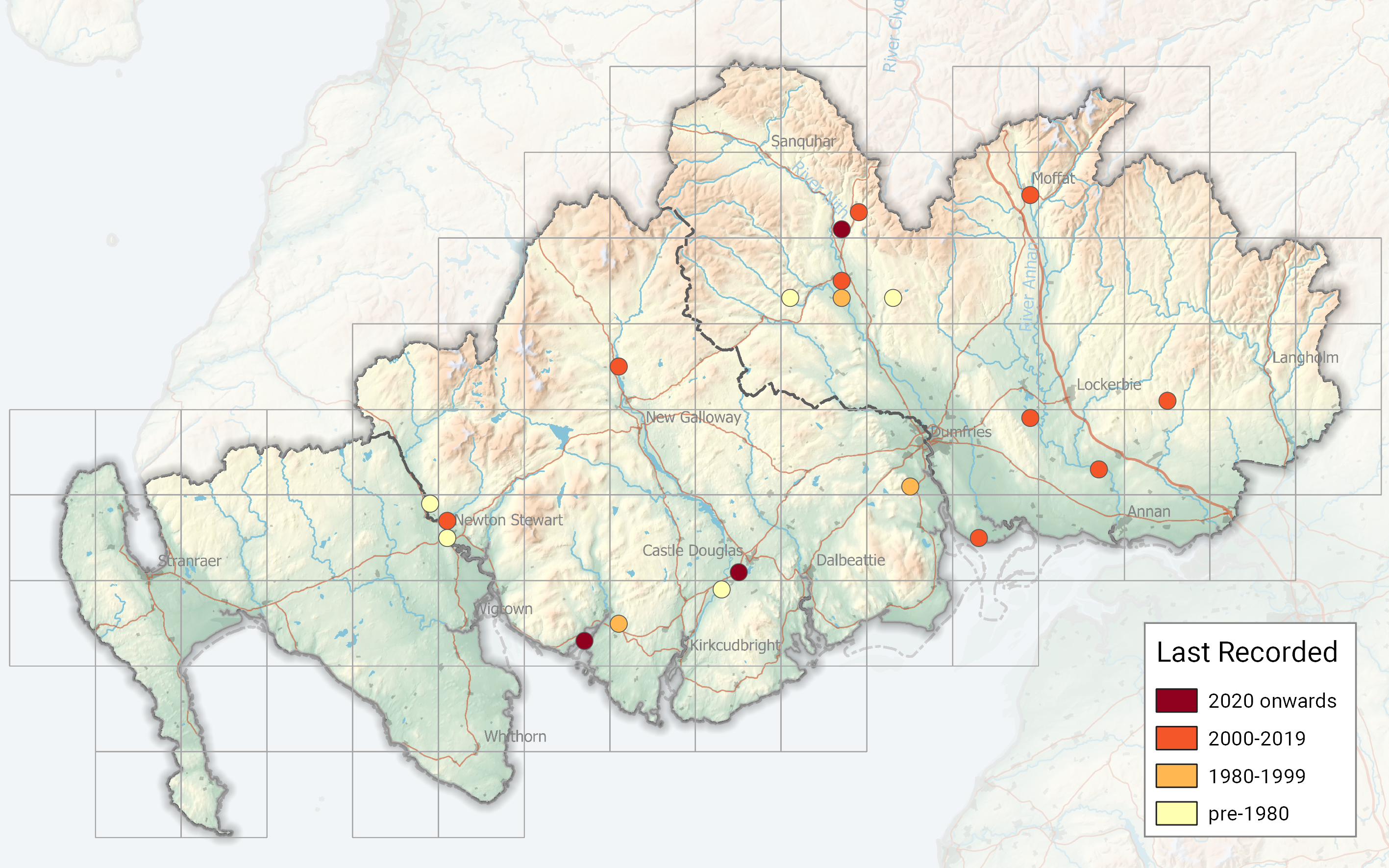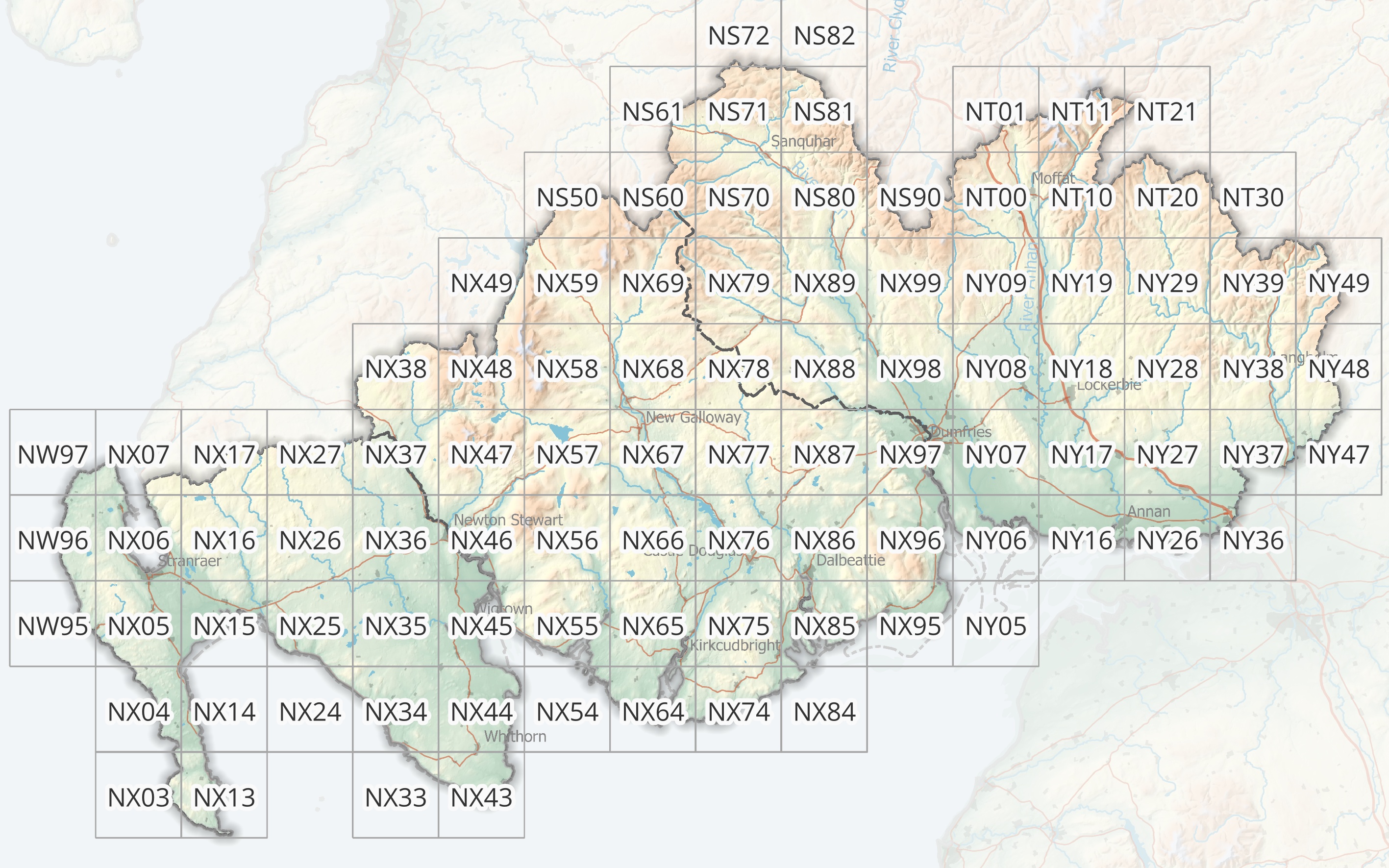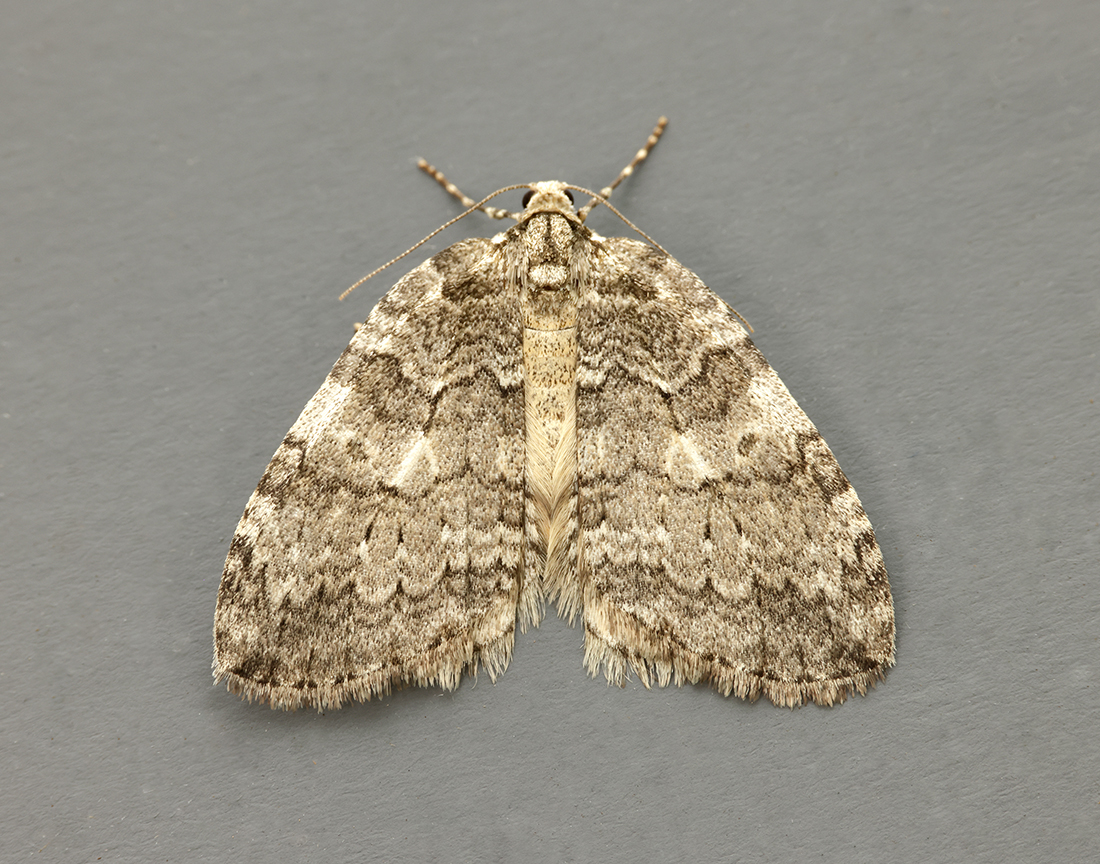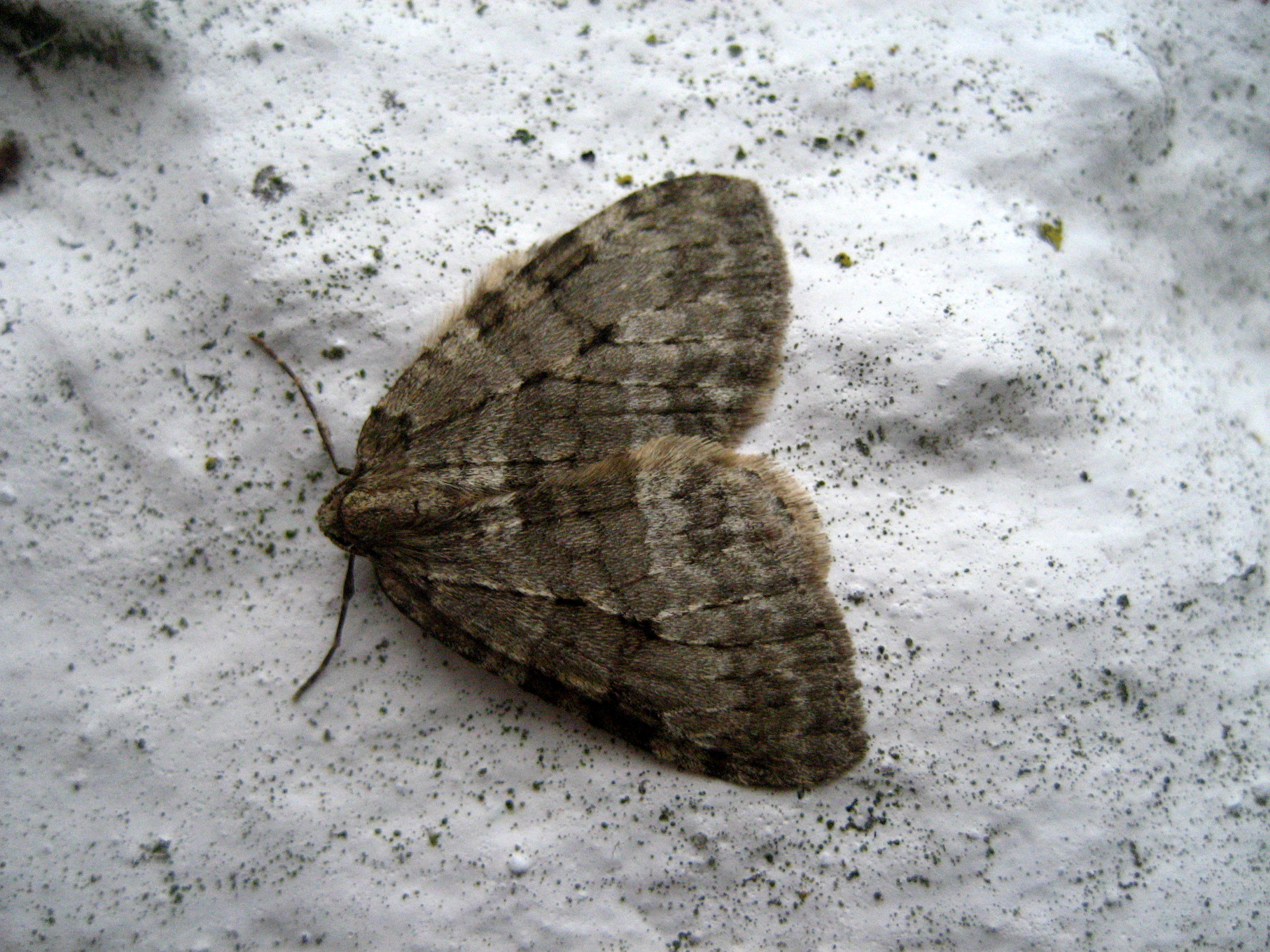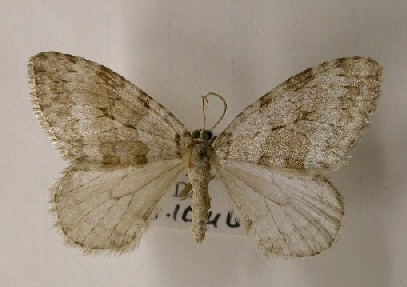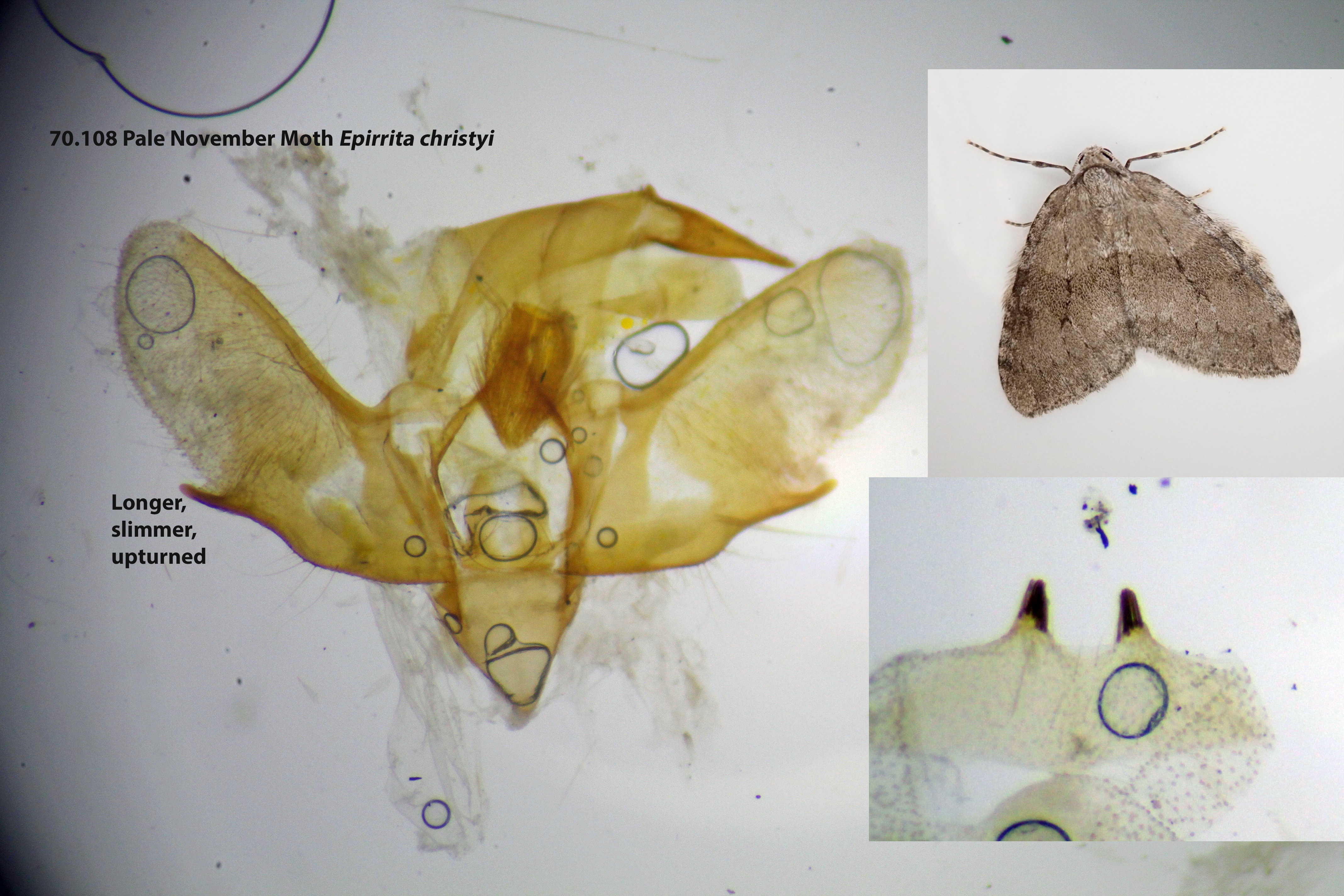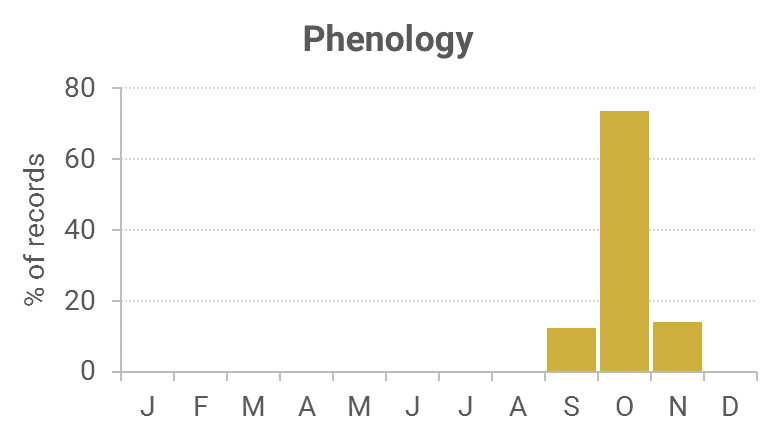Identification
Use the criteria explained in Waring et al. (2009) and Skinner (2009) to identify the males, but if worn, genitalia examination is necessary. Even this method is useless for females, but rearing from eggs might lead to the males being determined. Only take a minimum of specimens for determination at any one site.
Record undissected specimens as November Moth agg. (Epirrita dilutata agg.).
Recording method
Comes to light.
Life cycle
One generation. Overwinters as an egg. Larvae are present late April to June, with pupation underground.
Larval foodplants
Many broadleaved trees and shrubs.
Habitat
Prefers mature deciduous woodland where beech is dominant.
History
First recorded for Dumfries and Galloway only in 1946 for VC72 at Tynron by Duncan, in 1976 for VC73 in the Rothamsted light trap at Bridge of Dee and also in 1976 for VC74 in the Rothamsted light trap at Penninghame House, north of Newton Stewart.
